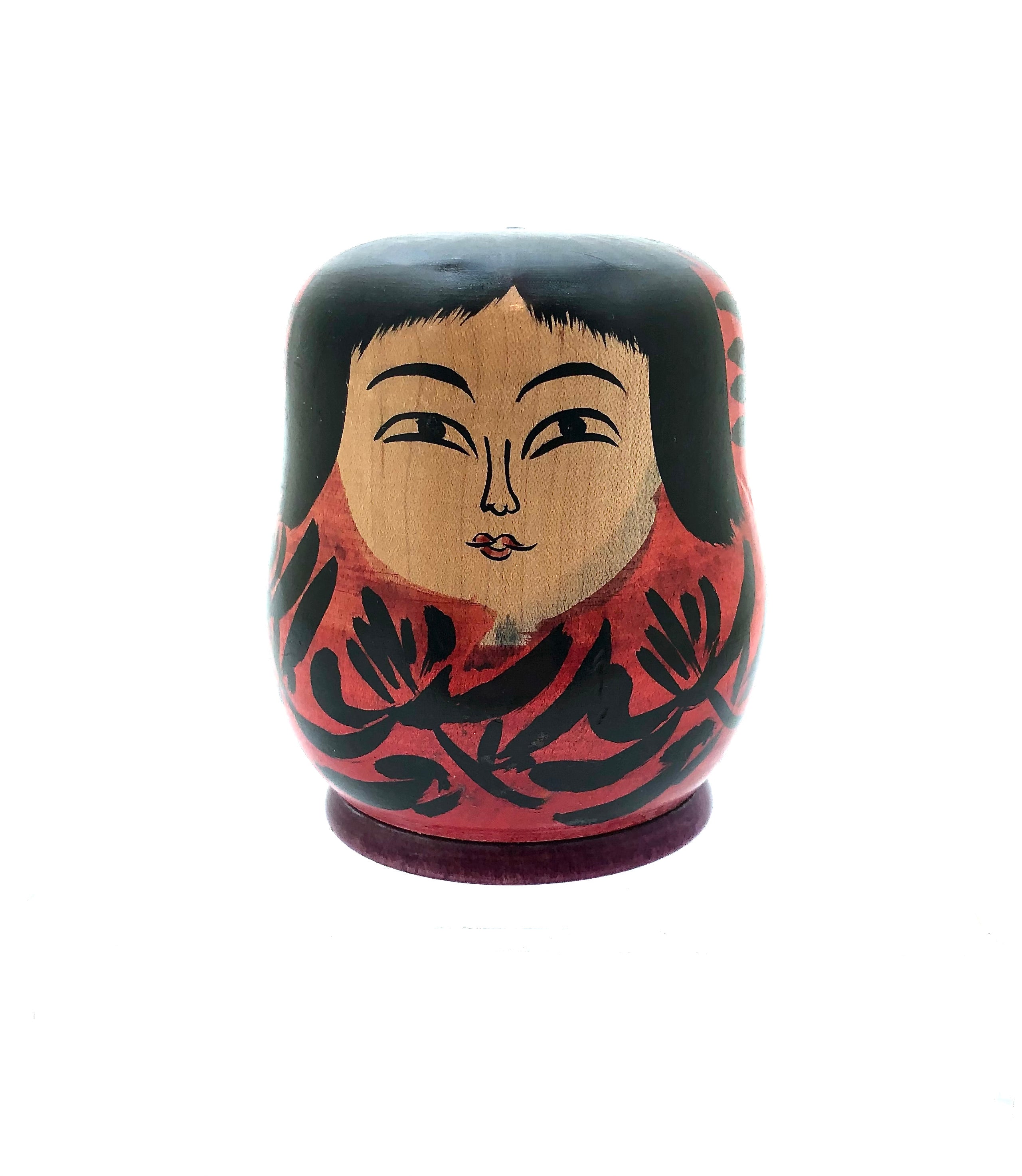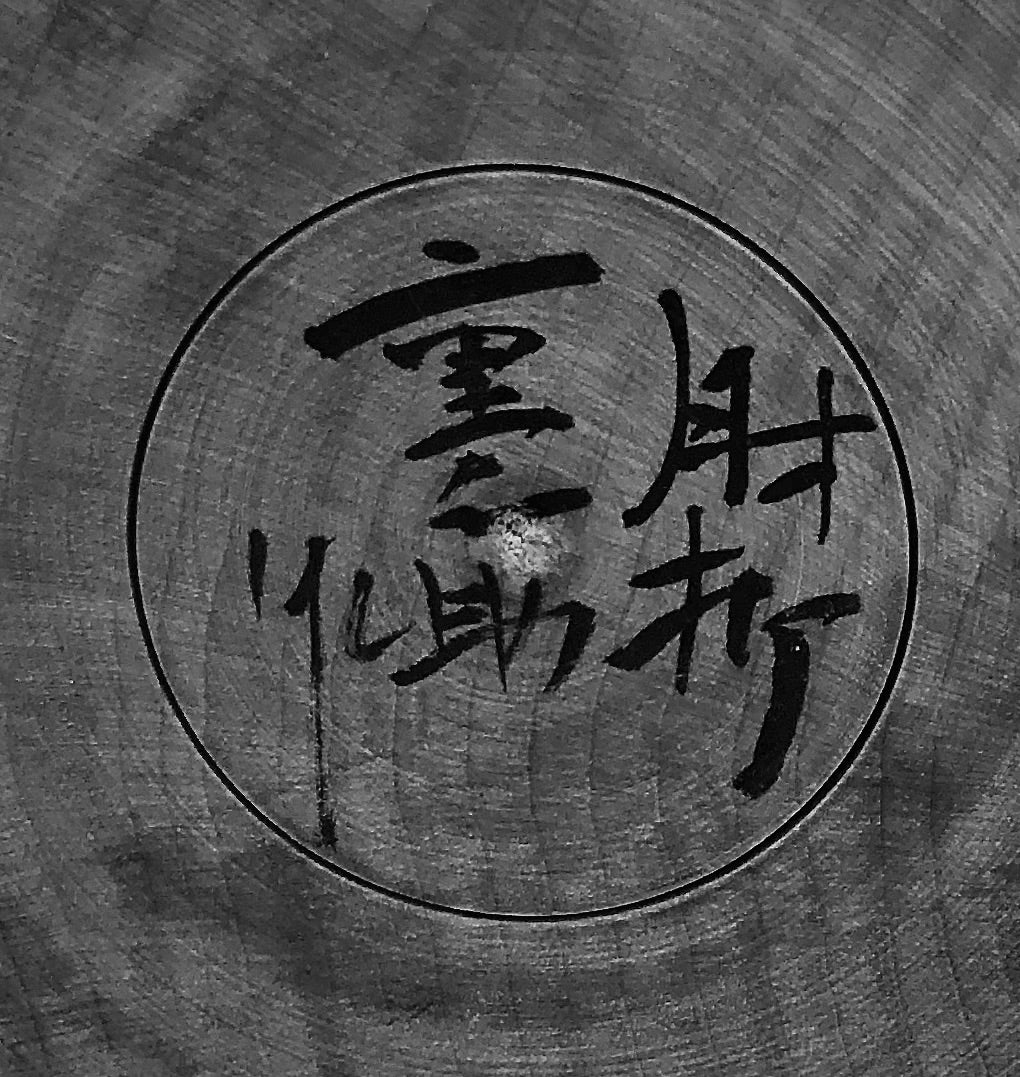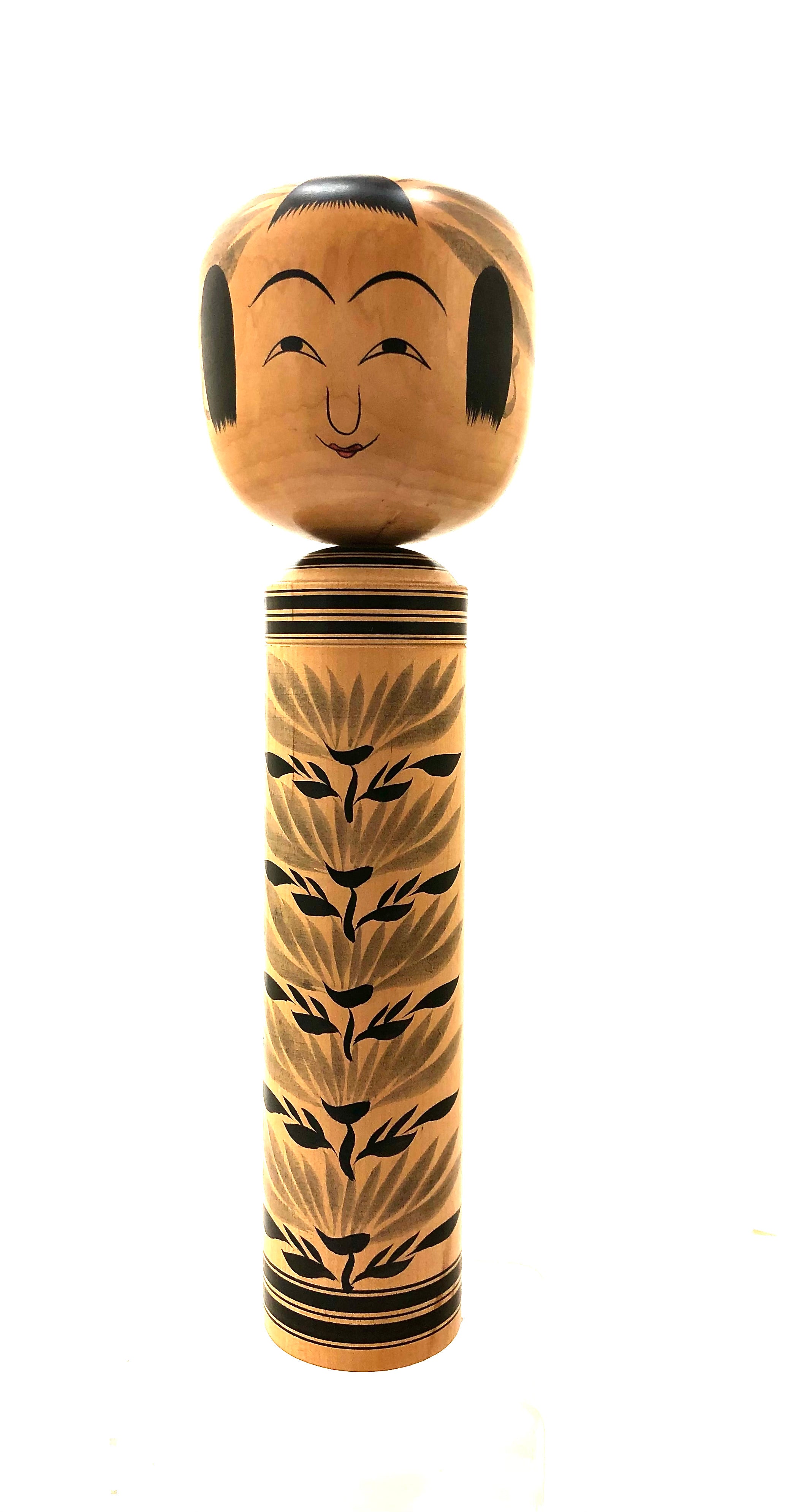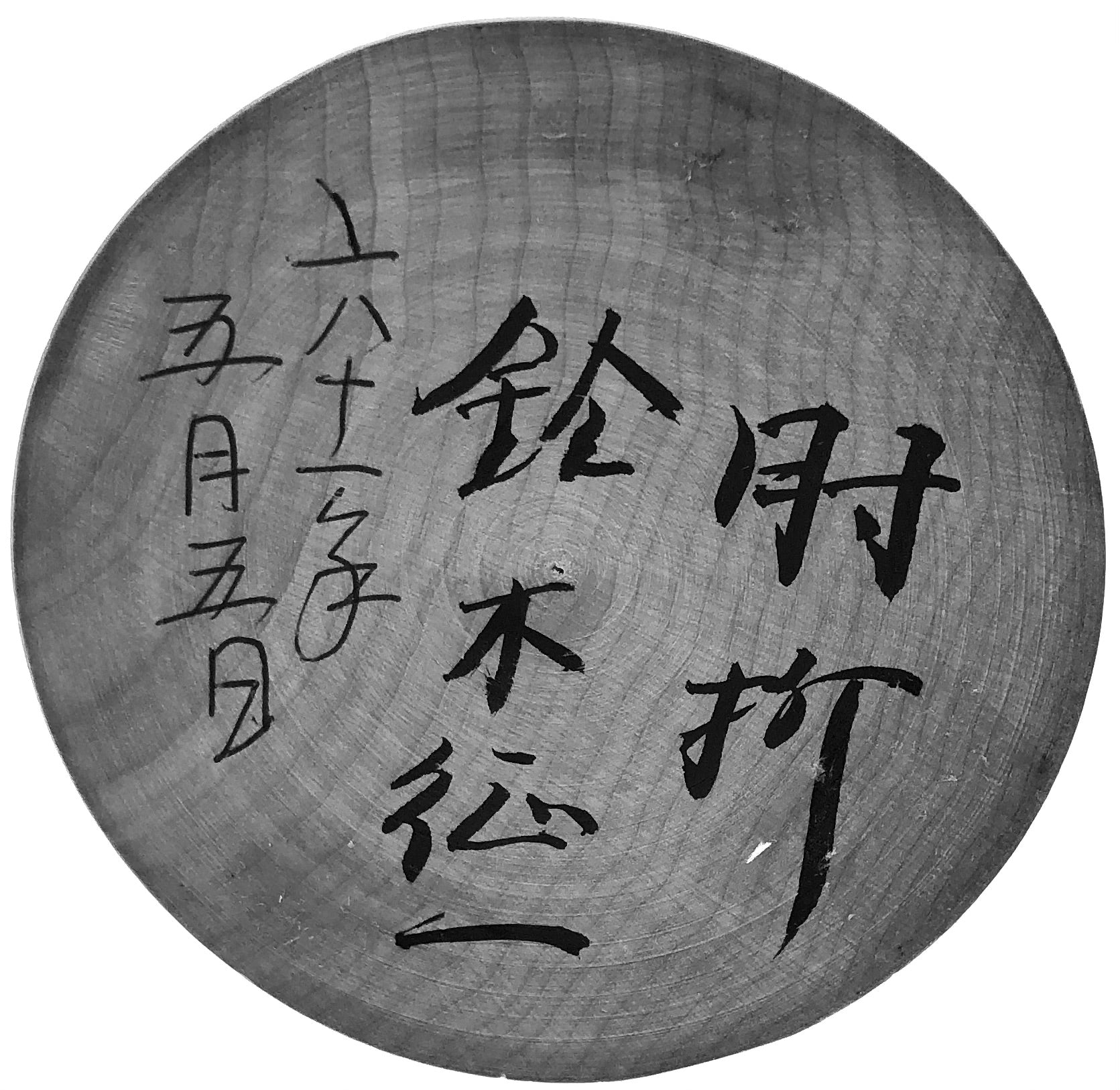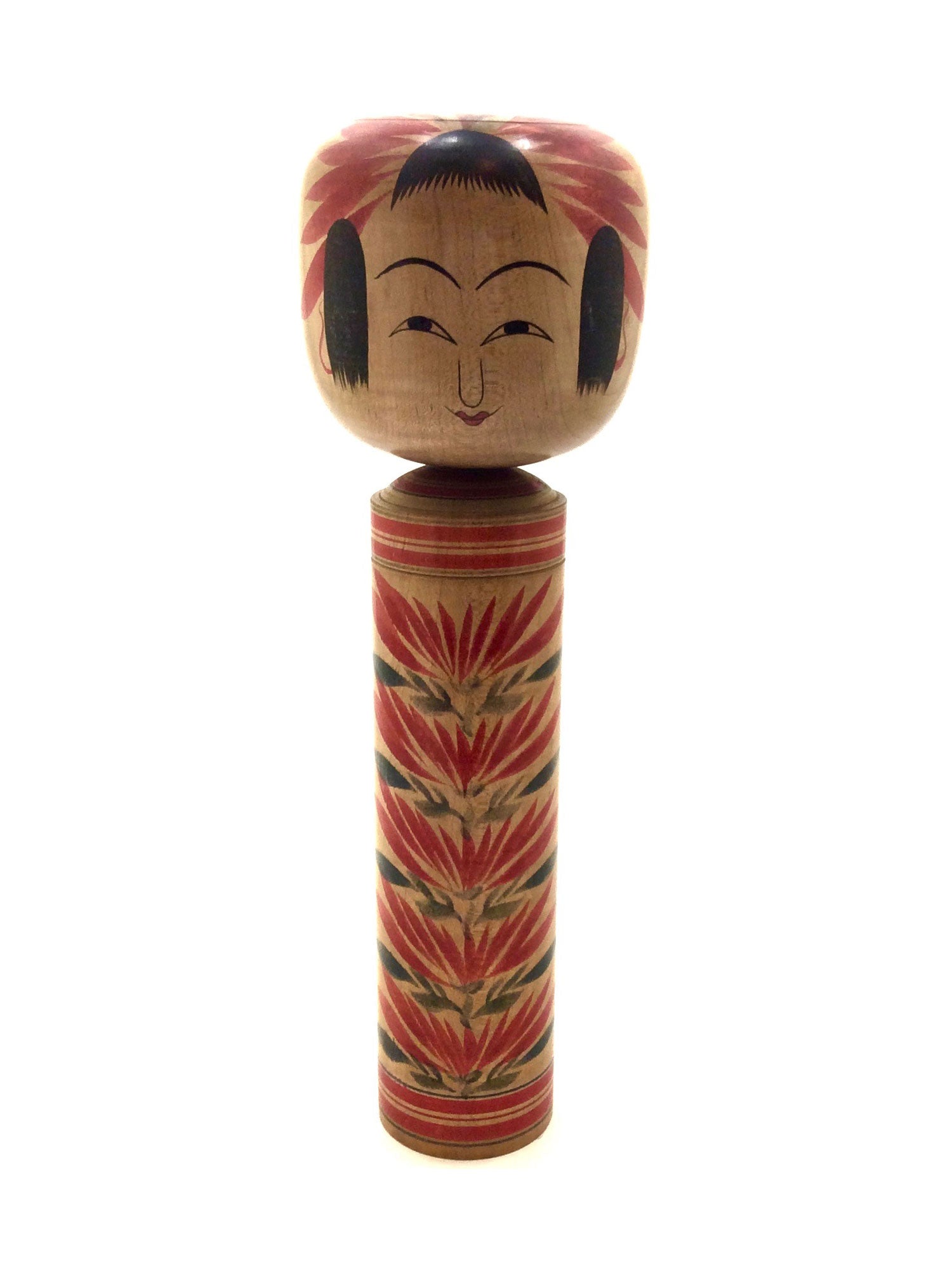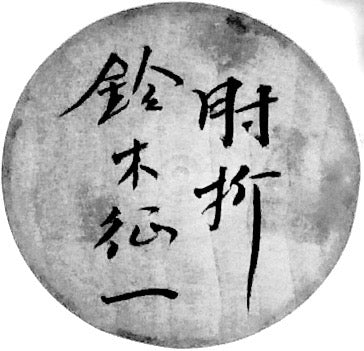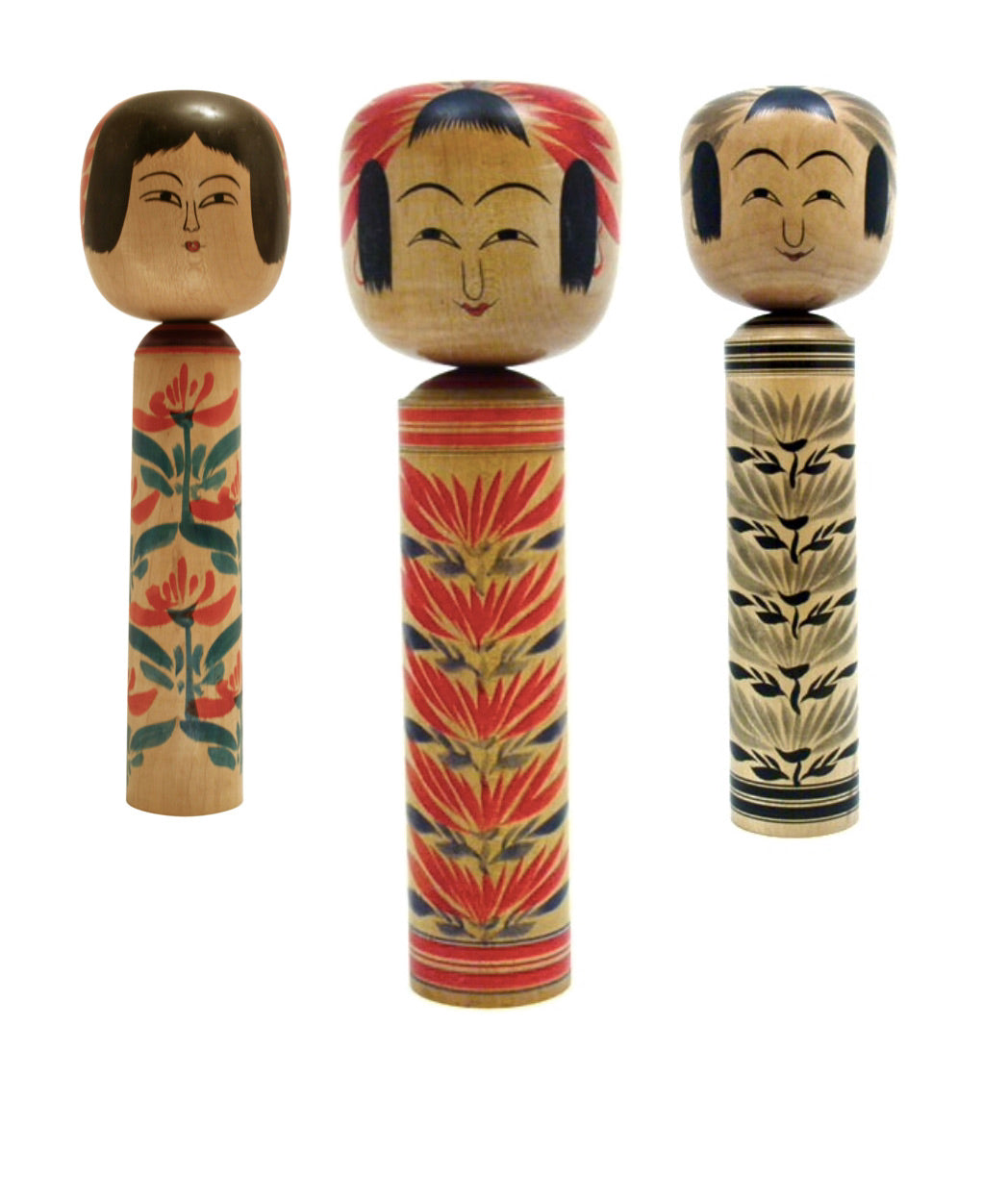

Japanese Traditional Kokeshi | Hijiori-Kei (Family)
Prefecture: Yamagata
Origin:
The Hijiori-style dolls originated in Yamagata prefecture, at Hijiori Onsen, and at Sendai city, and are the result of the merging of two Kokeshi-making families: Narugo and Tougatta. Hijiori was first developed by Shusuke, Sata, who moved from Togatta to the Hijiori spa, which is surrounded by the enduring presence of the "Dewa Sanzan”, (three mountains in the Dewa area). The Hijiori doll is considered a popular model for Kokeshi books and has very distinctive facial features and head decorations. Because fewer of these dolls are produced than the other styles, they are highly favoured among doll collectors because they are so distinctive and attractive and typically more expensive.
Collector's note – characteristics / painting style:
The main characteristics of Hijiori dolls are that their bodies have broad shoulders, straight bodies, and thick bases. They have stable, large heads that are round, oval, or blocky. The head is a squeeze-in type with one of several varieties of pegs attached to beveled (mori agari bubun) shoulders. Common is a thick bun on a flat top with split front bangs and often side hair fringes. Their eyes are crescent moon-shaped; some have double eyelids or eyes with the irises facing upwards. The noses range from Nekobana (rounded nose), Shishibana (small flared nostrils), or the Bachibana (longer sides with small flared nostrils). Tiny red lips are typical. Hijiori dolls are found in two styles: one with the body painted with chrysanthemums (Kiku), and divided by a narrow obi, and one on which the body is decorated with a 'spray' formation of flowers. Occasionally, they will have maple leaves (Momiji). The colour yellow (kichiya, introduced in the 1950s) is frequently used to paint the ground of the body, with additional decorative motifs added.

Leading Craftsmen:
Sato, Fumio, 1923-1986. Lineage: Tougatta lineage Master: Sato Bunsuke Disciples: Sato Hidehiro / Kobayashi Sadao / Ohata Hideo. Born in Togatta-Shinchi as the eldest son of Sato Ushizo and Tamayo, woodworkers in Togatta-Shinchi. He trained in woodworking under Sato Bunsuke. In 1940 Sato-san learned how to turn kokeshi dolls and toys. Fumio was said to have both the Bunsuke and Ushizo characters inside him and was always caught in a conflict between his two mentors from the Tougatta and Hijiori families.
Kobayashi, Sadao, 1933 -2020, No additional published information
Sato, Kiku, 1911, (Sendai, Miyagi) - Master: Sato, Minosuke
Okuyama, Kuraji, 1934, (Hijori Spa) - Master: Okuyama, Kiyoji
Sato, Junosuke, 1930-1977, (Hijiori Spa, Yamagata) - Master: Okuyama, Kiyoji
Suzuki Seiichi, 1935, (Sendai, Miyagi) - Master: Sato, Minosuke
Sato, Shoichi, 1935, (Sendai, Miyagi) - Master: Sato, Minosuke
Sato, Minosuke, 1905 - Master: Shusuke, Sato
Sato, Ushizo, 1899-1986 - No additional published information


